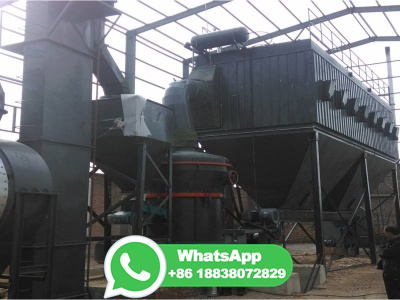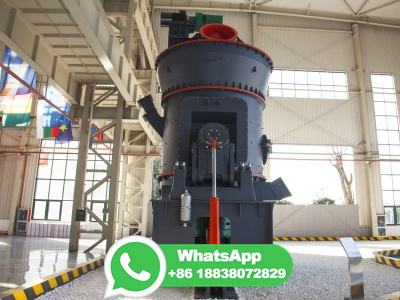
The hot tamping coking process. Fig. 1, Fig. 2 illustrate the schematic of the coking process and the heating process respectively. The properties of 1/3 coking coal used in the experiments are shown in Table 1. Firstly, 10 g crushed 1/3 coking coal with a particle size of less than mm is charged into the cylindershaped crucible.
WhatsApp: +86 18203695377
Coking coal, by definition, must be hard, and the term hard coking coal (HCC) is a general term used to describe coking coals with superior coking properties relative to their semisoft counterparts. Hard coking coal (HCC) represents the premium band of coking coals used solely for steel production through the blast furnace process.
WhatsApp: +86 18203695377
Metallurgical coal, also known as met and coking coal, is a naturally occurring sedimentary rock found within the earth's crust. Met coal encompasses a wide range of quality grades including hard coking coal, semihard cokingcoal, semisoft coking coal and pulverised coal for injection (PCI). All are used to make steel.
WhatsApp: +86 18203695377
Distribution of mercury in coal washing and coking processes (converted to 1 kg of mercury contained in raw coal fed to coal preparation plant) Clean coals derived from the coal washing process are used for coke production in coke ovens. The coking process is conducted in temperatures above 1000 °C.
WhatsApp: +86 18203695377
The coking process consists of heating coking coal to around ºC in the absence of oxygen to drive off the volatile compounds (pyrolysis). This process results in a hard porous material coke. Coke is produced in a coke battery, which is composed of many coke ovens stacked in rows into which coal is loaded. ...
WhatsApp: +86 18203695377
The coking process (coal to coke) occurs in the coke ovens. Finally, coke is removed using a pusher on one side and a coke guide on the other. The heat required for the coking process is supplied from the combustion chambers to the coke ovens through the refractory wall that separates the coke oven and the.
WhatsApp: +86 18203695377
Coking. Coking coal is an essential raw material for the production of iron and steel. Coke is a solid carbonaceous residue formed from coking coal (a lowash, lowsulphur bituminous coal, also known as metallurgical coal), which is used in make steel and other iron products [].Coke is produced by burning coal at temperatures up to 1000 °C in the absence of oxygen to remove the volatile ...
WhatsApp: +86 18203695377
These operations will be discussed in greater detail for the three major subprocesses: coal preparation and charging, thermal distillation and pushing, and byproduct recovery. Coal Preparation And Charging For ByProduct Coke Ovens The coal that is charged to the ovens is usually a blend of two or more low, medium, or high volatile ...
WhatsApp: +86 18203695377
So far, however, the steelmaking process has withstood engineers' best efforts to clean it up: there are simply too few lowcost replacements of key inputs such as coking coal and coke.
WhatsApp: +86 18203695377
Coking processes are processes in which the feedstock is thermally decomposed into lower boiling products. The major subforms of the coking process are (1) the delayed coking process and (2) the fluid coking process.
WhatsApp: +86 18203695377
The EFs of VOCs from different stages of the coking process were calculated, and coal charging exhibited the highest EFs of VOCs, followed by the flue gases from combustion of coke oven gas, wastewater treatment, coke pushing and chemical byproduct recycling. The VOCs in emissions differed by coking process.
WhatsApp: +86 18203695377
The fine coal is agglomerated by hot briquetting and charged into a conventional coke oven together with the preheated coarse coal. The next stage is a coking process at a much lower temperature (750850 °C) than in conventional process.
WhatsApp: +86 18203695377
A carbonaceous solid that appears to have passed through an intermediate fluid state when being produced is called a coke. Carbonaceous solids that do not pass through such a fluid state during formation are chars. These definitions apply to carbonization processes using any feedstock, including biomass, petroleum, and polymers.
WhatsApp: +86 18203695377
The coking time is determined by the coal mixture, moisture content, rate of underfiring, and the desired properties of the coke. When demand for coke is low, coking times can be extended to 24 hours for blast furnace coke and to 48 hours for foundry coke. Coking temperatures generally range from 900° to 1100°C (1650° to
WhatsApp: +86 18203695377
Most of the chemicals derived from coal come from byproducts produced during the coking process. Coal is used to make coke to make steel. Coke gas (also called foul gas) contains coke tars, ammonia, and light oils. Tars are recovered and used to make tar derivatives. Ammonia is recovered as an aqueous solution or as an ammonium sulfate salt.
WhatsApp: +86 18203695377
Coking is a refinery unit operation that upgrades material called bottoms from the atmospheric or vacuum distillation column into highervalue products and, as the name implies, produces petroleum coke —a coallike material.
WhatsApp: +86 18203695377
Coal tar pitches (CTPs) as byproducts of the coal chemical industry can be used to fabricate lowcost hard carbon anodes in sodiumion batteries (SIBs) via preoxidation methods; however, an indepth analysis of their synthesis processes is still scarce in literature. In this study, three typical isotropic CTPs (denoted as P1, P2, and P3) with different physicochemical properties (glass ...
WhatsApp: +86 18203695377
Process description of fluid coking. Fluid coking is a thermal cracking process consisting of a fluidized bed reactor and a fluidized bed burner. A flow diagram is shown in Figure 5. Vacuum residue is preheated and fed to a scrubber that operates at 370°C above the reactor for coke fine particle recovery.
WhatsApp: +86 18203695377
Under specific coking conditions, the rank and type of the feed coals determine the coke yield and coke quality (Diessel Pickel, 2012). The effect of coal rank on the coking process and its products is related to the molecular structure of coals (Diessel Pickel, 2012). As the coal rank increases, the coal molecular structure becomes more ...
WhatsApp: +86 18203695377
Coal plasticity is a phenomenon directly affecting the creation of coke structure. It is very much a time and temperaturedependent transformation of the coal matrix, which allows changing the physical phase from solid to liquidlike and again into solid of different properties. The coking process, particularly in a plasticization temperature range, can be considered as a nonisothermal ...
WhatsApp: +86 18203695377
Cleaning should not materially affect the ratio of a coal's heattocarbon content because the process removes primarily noncombustible impurities. ... mostly in Appalachia, supply coking coal. The coke industry, which has been declining, accounted for only 4 percent of total coal consumption in 1992, down from 9 percent in 1980.
WhatsApp: +86 18203695377
The blended coal mass is heated for 12 to 20 hours for metallurgical coke. Thermal energy from the walls of the coke chamber heats the coal mass by conduction from the sides to the middle of the coke chamber. During the coking process, the charge is in direct contact with the heated wall surfaces and develops into an aggregate "plastic zone".
WhatsApp: +86 18203695377
The coke oven gas which accounts for ∼15 − 20 wt% of the coking process is mainly composed of H 2 (derived from aromatic condensation) and CH 4 (from dealkylation reactions) and to a lesser extent, ... a 1/3 coking coal was preheated at two low and one rapid rates, then raw coal and heattreated samples were comprehensively analyzed. The ...
WhatsApp: +86 18203695377
Coke chemical companies often have a deficit of coals of particularly valuable grades, the coking coals. This work studies the opportunity of producing petroleum coking additives using delayed coking during heavy petroleum residue processing. Experiments for the production of a carbon material were conducted using three kinds of heavy petroleum residues of the oil refinery plant Ltd Kinef: the ...
WhatsApp: +86 18203695377
Research and practice have shown that solventmodified coal can replace about 510% of the coking coal consumed in the coking process, which can effectively reduce the cost of coking production, improve the metallurgical properties of coke, improve the energy supply of steel production enterprises problems, improve the economic efficiency of ...
WhatsApp: +86 18203695377
Coke is the pyrolyzed and annealed product of coking coal which plays a vital part in the BF ironmaking process. As a hard and porous material, coke acts as structural support media against the weight of the ferrous burden materials charged to the BF and provides pathways that facilitate gas and liquid transport through the BF.
WhatsApp: +86 18203695377
the amount of volatile matter released in the process of coal coking may be related to the. activity of oxygen containing functional groups in coal, that is, volatile matter is easier to.
WhatsApp: +86 18203695377
Coking coal (Fig. 1) is the feed coal with certain caking property that can be coked under coking conditions and used to produce coke with certain quality. The coking coal is transformed from a large number of plant remains buried underground hundreds of millions of years ago after complex biochemical, geochemical, and physicochemical action.
WhatsApp: +86 18203695377
Coking. Despite the development of catalytic cracking processes, coking processes have survived as a popular refining process all over the world to refine the heavy end of crudes or heavy oils through carbon rejection as coke. Coking is the most severe thermal process used in the refinery to treat the very bottomofthebarrel of crude oil, ...
WhatsApp: +86 18203695377
Evaluating the coking coal quality from coal structure thermal transformation was crucial to control the coking process. The coal quality indices of ash composition, volatile matter, element distribution and caking indices were redefined based on the coal structural characteristics.
WhatsApp: +86 18203695377
The key difference between coal and coke is that Coal is a naturally occurring fossil fuel. Coke, on the other hand, is derived from heating coal. In other words, Coal originates naturally from the fossilization of organic matter over millions of years. In contrast, Coke is derived from coal through a process called coking, involving high ...
WhatsApp: +86 18203695377
The coking time is determined by the coal mixture, moisture content, rate of underfiring, and the desired properties of the coke. When demand for coke is low, coking times can be extended to 24 hours for blast furnace coke and to 48 hours for foundry coke. Coking temperatures generally range from 900° to 1100°C (1650° to
WhatsApp: +86 18203695377
Coal is one of the most important raw materials for coke making process. Coal properties for coke making process affect not only the battery operation but also coke quality. Quality parameters of coking coal also affect the techno economy of the entire steel plants, as more than 50% of raw material cost is contributed by coal. ...
WhatsApp: +86 18203695377
To make steel in a blast furnace, coal must first be turned into coke. Coke has a dual role in the steelmaking process. First, it provides the heat needed to melt the ore, and second, when it is burnt, it has the effect of 'stealing' the oxygen from the iron ore, leaving only the pure iron behind. In the coking plant, coal is heated in the absence of oxygen to 1250c.
WhatsApp: +86 18203695377
Experiments for the production of a carbon material were conducted using three kinds of heavy petroleum residues of the oil re finery plant Ltd Kinef: the vacuum residue from crude atmospheric and vacuum distillation units (VR1), the vacuum residue from the vacuum distillation hydrocracking unit (VR2), and the visbreaker residue from the visbrea...
WhatsApp: +86 18203695377